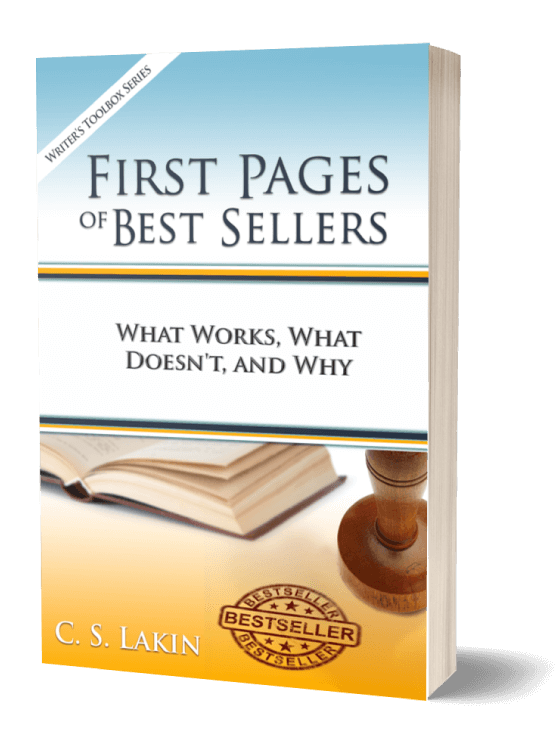
First Pages of Best Sellers: What Works, What Doesn’t, and Why
The First Page of Your Novel Must Be Perfect!
Most authors know that the first pages of a novel are the most crucial and carry the weightiest burden in their entire book. The opening scene must convey so many things that often the author will have to rewrite it numerous times to get it right.
But the first page is especially crucial to get right.
Why?
Because if readers don’t get engaged in the story right away, they’ll stop reading.
That puts a tremendous burden on writers to bring their best effort to the table.
And, truth be told, a novel’s first page is indicative of all the pages to follow. So it behooves writers to learn how to master the techniques needed to craft terrific first pages.
Using a first-page checklist, Lakin examines two dozen first pages of best-selling novels, detailing what works, what doesn’t, and why.
Here are some of the issues and topics explored in this deep dive:
- Narrative that is excessive or “telling” instead of showing
- Opening paragraphs that fail to grab readers due to lack of intriguing action or flat characters
- Writing that grabs and writing that bores
- How much detail is too much or too little
- Finding the perfect balance when world building
- Ways to evoke emotion quickly in readers to get them to care about your story
- To prologue or not to prologue
- Consideration of first pages of novels in a series and what that requires
- Understanding how genre is the key to every great first page
- The pitfalls of backstory
Yes, you can craft a perfect first page—one that immerses your readers into your story and characters without delay. The insights you gain from studying these first-page analyses will serve you well with every page you write.
Buy The eBook
$7.99
Buy The Book
Reviews
The Writer’s Toolbox Series

Get your Free Ebook!
Subscribe to my email blasts to level up your writing and be notified of upcoming events and offers!
